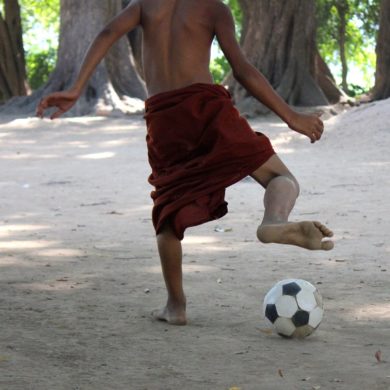Climate change is triggering glacial melt in Pakistan and resulting into glacial lake outburst floods. Will the mountain communities learn to live in a warming world?
The catastrophe that struck Barikan Kot village more than a century ago is still being felt. The rubble and boulders that came along with the historic super flood caused by the outburst of the nearby Hinarchi glacier are still there. What lies underneath are peoples’ homes, fertile land and orchards. Silence prevails in the area as the land is uninhabitable to-date. This situation is not due to just one natural calamity that came 100 years ago but also that now Barikan Kot village suffers from many glacial lake outburst floods every year.
This was explained by Shah Raees, a middle-aged man, who was standing on top of the rubble in Barikan Kot village that lies in Bagrot valley of Gilgit Baltistan. Shah Raees shared a heart wrenching story of how his ancestral home and 10 kanal land in Barikan Kot village was swept away by the historic super flood.
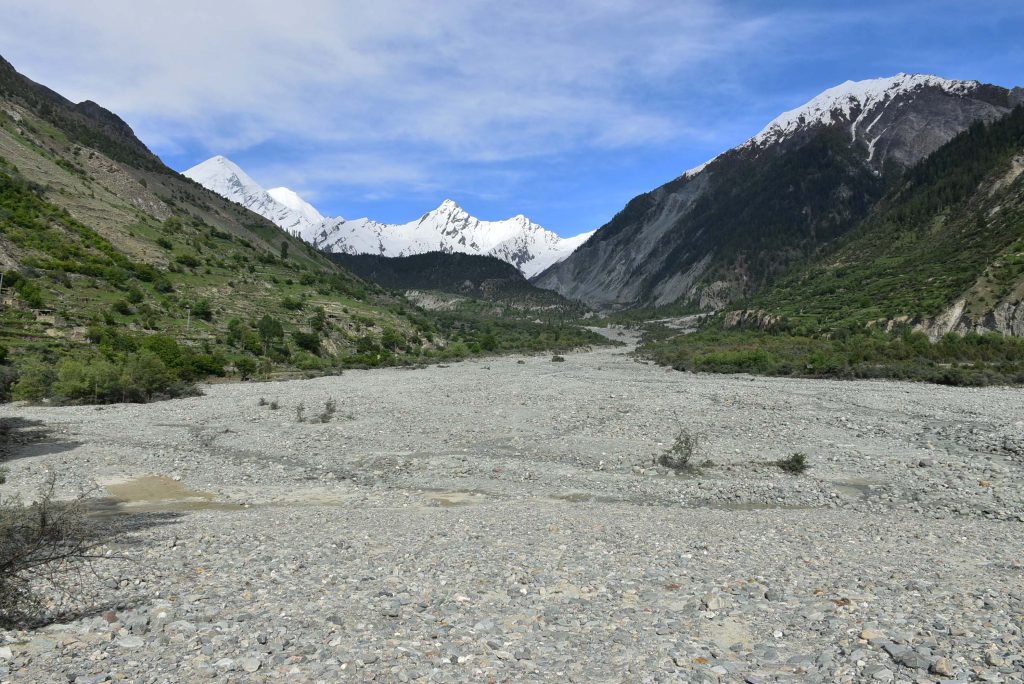

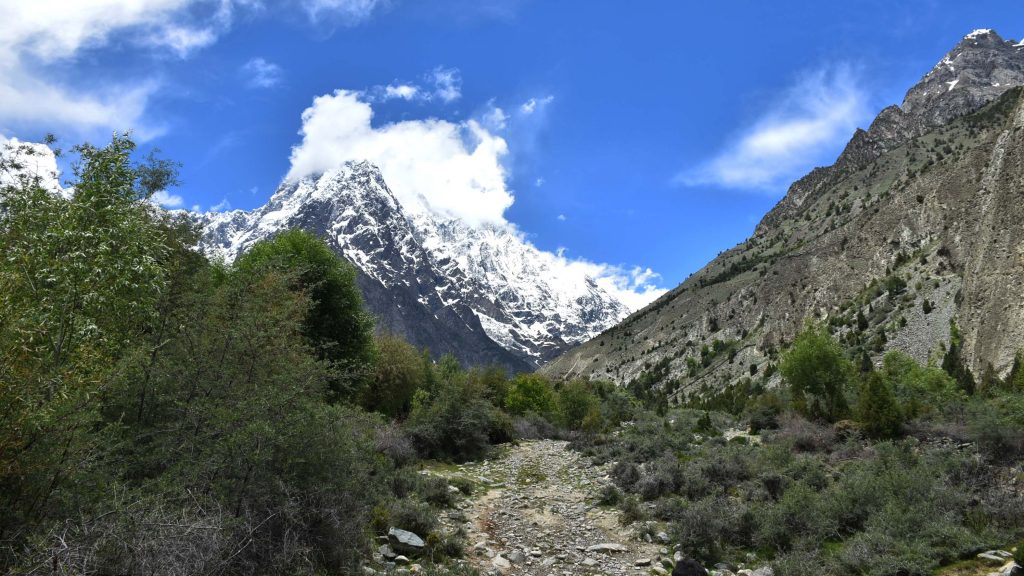

The flood occurred as the iced wall of Hinarchi glacier which was holding a big glacial lake had burst, leading to a glacial lake outburst flood disaster. Shah Raees’s forefathers weren’t the only affectees, as 100 other households of the village were devastated as well, who had to migrate to other areas in search of livelihoods and safety.
The traces of this super flood are still visible and even today the Barikan Kot village is deserted. The situation has now worsened with the entire Bagrot valley suffering multiple glacial lake outburst floods every year. The occurrence of an extreme weather event after a few decades was considered a natural phenomenon but an unprecedented increase in the intensity and frequency of natural disasters is an anomaly. Experts call this climate change.
In conservation with Aisha Khan, the Executive Director of Civil Society Coalition for Climate Change (CSCCC), who also heads the Mountain and Glacier Protection Organization (MGPO), informs why there is an increase in the formation of glacial lakes. According to her, “Global warming and changes in mountain ecosystem will increase the formation of glacial lakes and exert pressure on human and natural systems. Most of these glacial lakes in the Hindu Kush Himalayan region of Pakistan were formed in the last five decades and the number of glacial lake outburst flood events is likely to increase, as new lakes are being formed and old lakes become more unstable.”
“Communicating the scientific reasons of glacier outburst flood events in simple language with the concerned communities is vital to better acquaint them with the changing climate and mobilising their support, as well as leveraging local knowledge and communication tools into the program.” Aisha adds, “The impacts of glacial lake outburst floods are catastrophic and require a combination of scientific and social approach to effectively address them in Pakistan.”
Whereas Shah Raees informs how glaciers in Bagrot valley are getting even more unstable which is threatening their lives. “This year there was a record glacial lake outburst flood event and our considerable land was inundated due to it. Due to glacier outburst events, the local population and livestock are in danger,” he says.
Raees adds, “The glaciers are slowly moving and have even reached a mosque, which my father had built in the village. As far as I know, due to these glacial outburst incidents five people have died and over 100 animals have been killed.”
Temperature rise seems to be the cause of glacier melting, including the Hinarchi glacier on which many glacial lakes are being formed, posing a serious threat to human lives and livelihoods. This was explained by Syed Zahid Hussain Shah, an expert to manage the threats posed by glaciers. He was also the field manager of Glacial Lake Outburst Flood-I (GLOF-I) project (2011-2016) jointly managed by the Government of Pakistan and United Nations Development Programme (UNDP) Pakistan. The project aimed to reduce the threat of glacial lake outburst flood incidents in Bagrot valley in Gilgit-Baltistan and Bindo Gol valley in Chitral district of Khyber Pakhtunkhwa province.

Zahid took a long hike to show how the Hinarchi glacier that used to be 18km in length but owing to the impacts of climate change over the past 30 years has reduced by approximately 2km. While pointing out to the boundaries of Hinarchi glacier, Zahid says, “Hinarchi glacier also used to have a greater height in the past but due to climate change it has reduced significantly.”
He further adds, “The adverse impacts of climate change on the Hinarchi glacier include the formation of lakes. The depressions on the glacier lead to the formation of glacial lakes every year. If these lakes drain they pose no threat but if they don’t, their chances to burst are high and eventually devastate the downstream communities.”
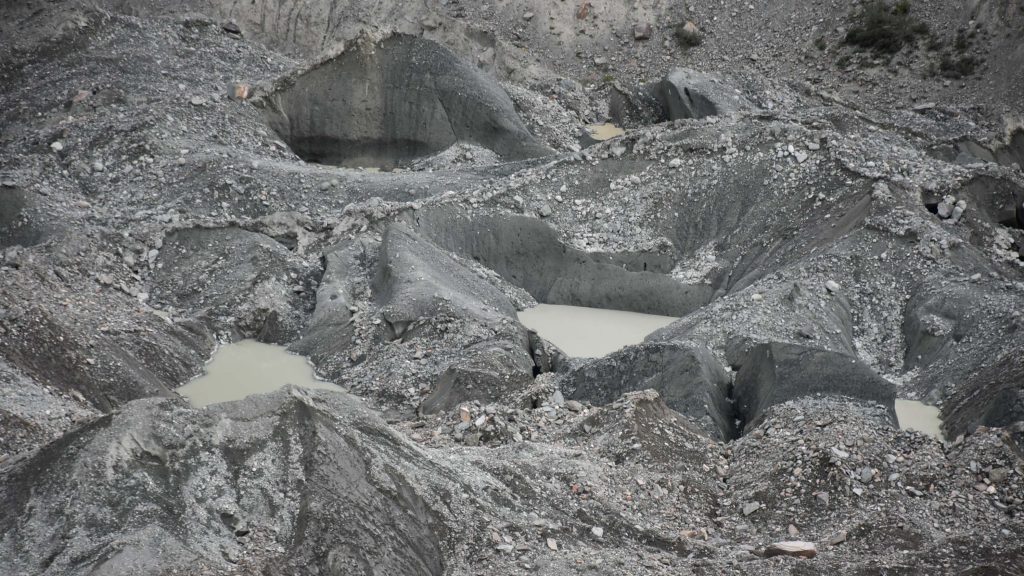
“The first village to be affected in case of a glacier outburst incident from Hinarchi glacier is Chirah, followed by Bulchi. These glacial floods threaten the downstream communities, and frequently damage the water channels, power houses and bridges etc,” says Zahid.
Zahid informs how these glacial lake outburst flood incidents have triggered migration in the valley. “The increasing number of glacial lake outburst floods from Hinarchi glacier has forced approximately 15-20 households from Chirah village and Bulchi village to migrate to safer places.”
Alongside Hinarchi glacier, Bagrot valley is home to Burche glacier, Yune glacier and Gutumi glacier and all of them experience outburst floods in July and August, inundating Barikan Kot village and other parts of Bagrot valley.
To reduce the threats posed by glacial lakes, the GLOF-I project by the Government of Pakistan and UNDP Pakistan took several initiatives in Bagrot valley, including the construction of a bridge and protective walls, and excavation of streams among others. One of the interventions of the project was the installation of four automatic weather stations, meant to relay important information on possible glacial lake outburst flood events to the meteorological department of Pakistan, which could be subsequently shared with the local communities.
“These weather stations proved instrumental in saving many lives in 2014, as it relayed early warning messages of a possible glacial lake outburst flood event to the local communities almost 90 minutes before the disaster. This gave enough time to the people to move to safer places before the flood actually came,” told Zahid.

A resident of Bulchi village, Hussain Ali, 50, also confirms how these early warning systems helped to save human lives. He says, “The early warning systems provided through the project shared accurate information about the upcoming floods, allowing them to shift to safer places.”
Hussain also informs the devastating impacts of glacial lake outburst floods on the lives and livelihoods of the local communities. “So far, these floods caused by the outburst of glacial lakes have killed more than 20 people and 200 livestock in Bulchi village,” informs Hussain.
Bagrot valley isn’t the only one witnessing extreme weather events. Pakistan is home to more than 7000 glaciers and over 3,000 glacial lakes have formed owing to the increasing impacts of climate change. Of these, 36 glacial lakes are considered potentially dangerous, which can result into glacial lake outburst floods and possibly affect over seven million people, including women and children, in the mountainous region of Pakistan.
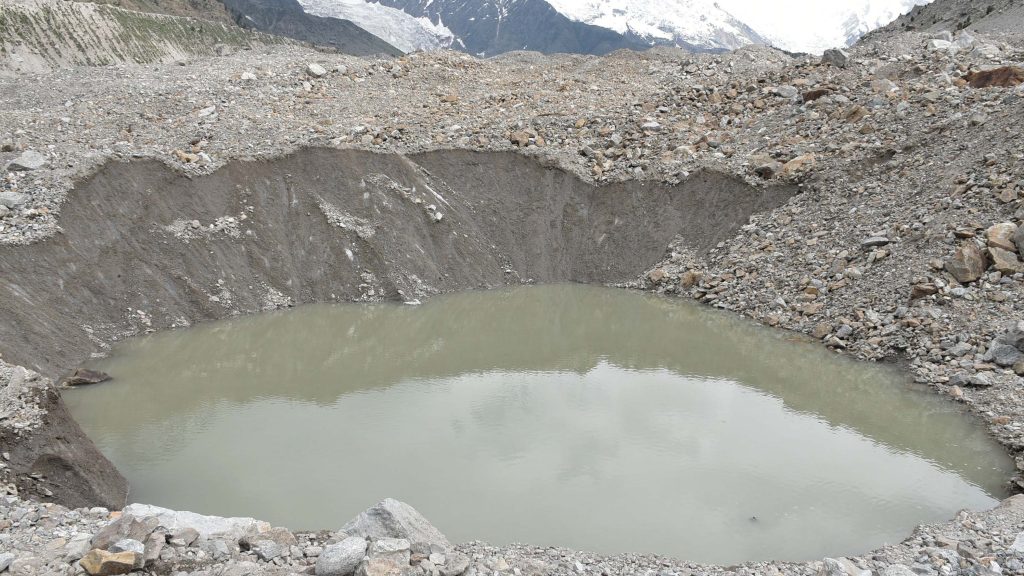
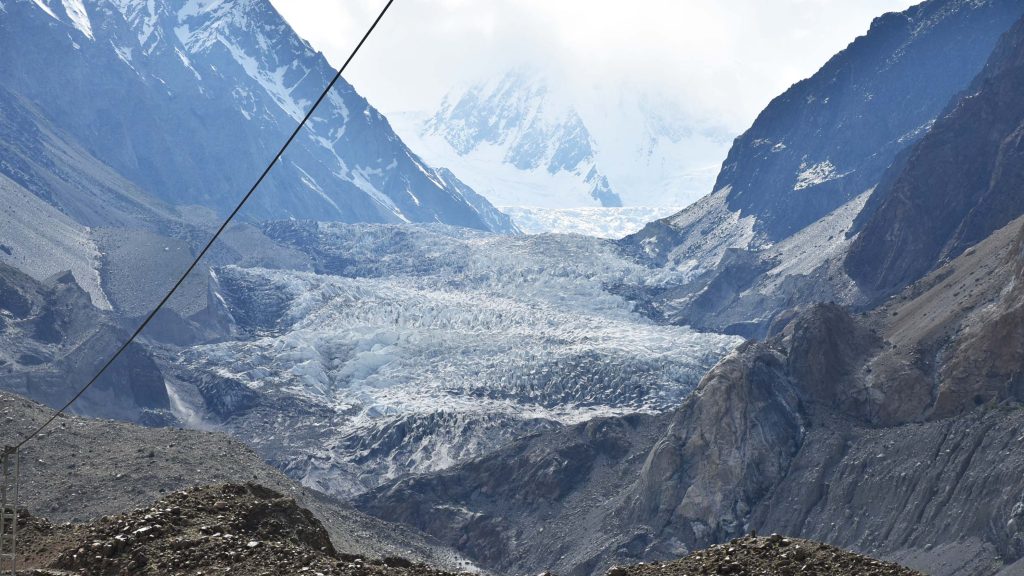
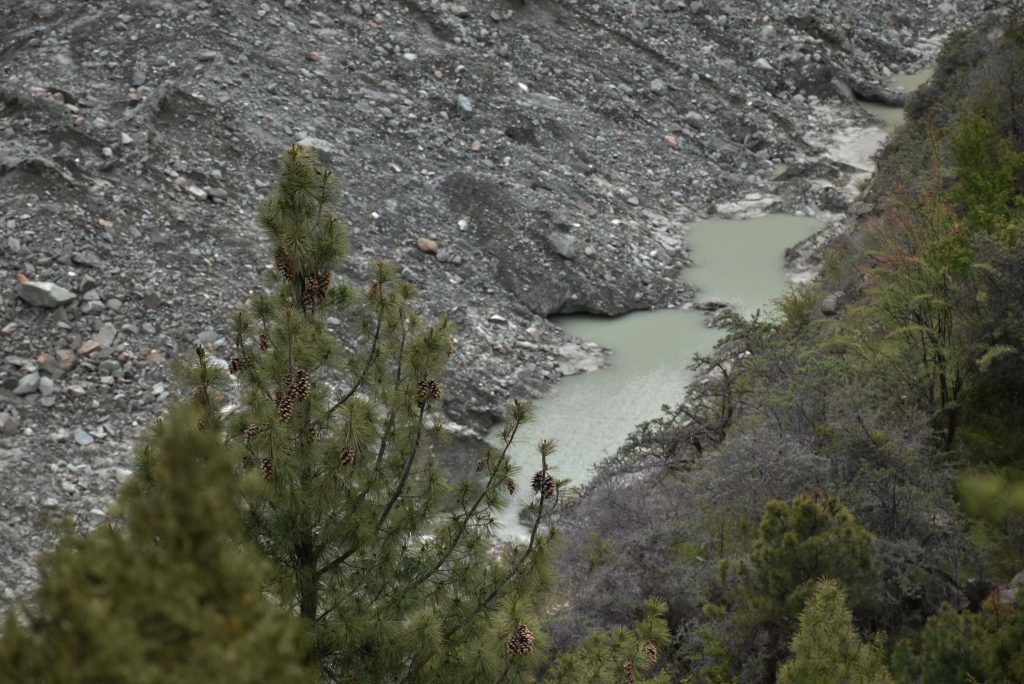
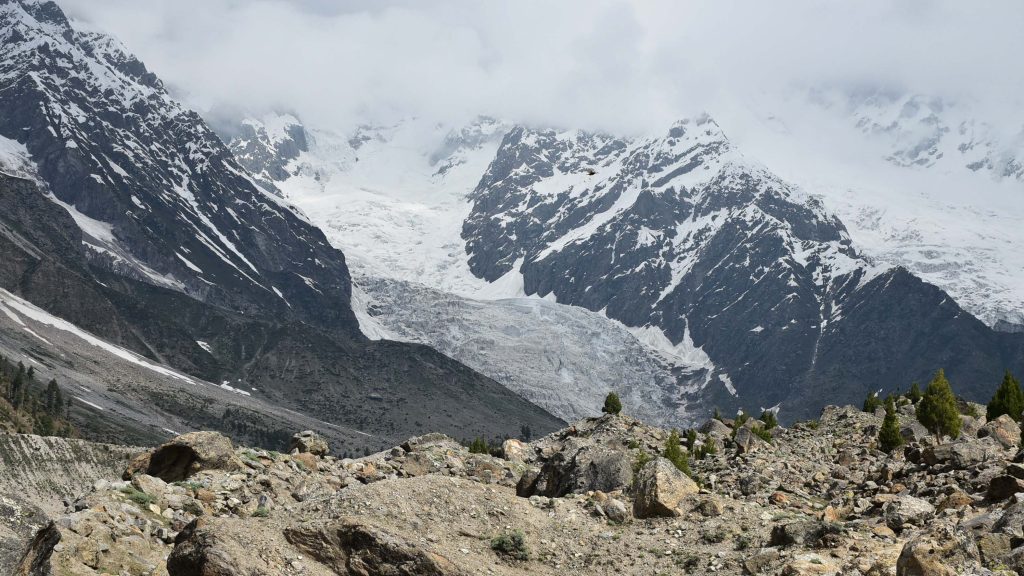
Other countries of the Hindu Kush Himalayan region – Afghanistan, India, Bangladesh, China, Bhutan, Myanmar and Nepal are also vulnerable to glacial lake outburst flood events due to global climate change. According to Irfan Tariq, Director General, Ministry of Climate Change, “The entire Hindu Kush Himalayan mountain range is a very sensitive ecological system and global warming is destabilizing the whole region. It is very difficult to control or limit the impacts of climate change on glaciers.”
With regards to the government’s efforts to tackle these extreme weather events, Irfan informs, “Pakistan is witnessing an unprecedented surge in glacier outburst incidents. The government is closely looking at the movement of glaciers and the issue has also been discussed during the first meeting of Prime Minister’s Committee on Climate Change.”
“To address the challenges posed by glacial lake outburst floods, the government has launched the GLOF-II project and we hope that it would be a success,” he adds.
GLOF-II (2017-2021) is a US$ 37 million project by the Government of Pakistan and UNDP Pakistan to reduce the threats of glacial lake outburst floods in the Hindu Kush Himalayan region of Pakistan, which includes the Gilgit Baltistan region and Khyber Pakhtunkhwa province. The project will cover 10 districts of Pakistan and benefit 29 million people.
The fact that Pakistan is experiencing an increase in the intensity and frequency of glacial lake outburst floods is a worrying sign for many. For Syed Mehr Ali Shah, Pakistan Commissioner for Indus Waters and Joint Secretary, Ministry of Water Resources, “These glacial lake outburst floods can have a serious impact if they occur on a large scale. From the perspective of Government of Pakistan, we are very much concerned with the bigger glacial lake outburst flood events, with regards to the safety of our existing hydraulic infrastructures, which include Tarbela dam.”
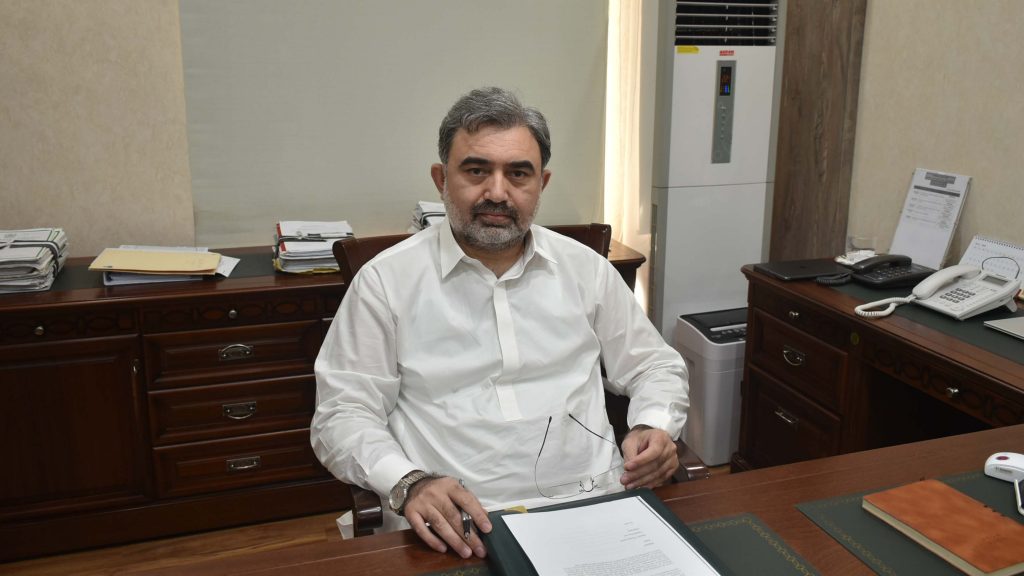
“In the near future, as we are proceeding towards constructing Diamer Bhasha dam, the safety of these structures is very important. We need to protect them from any kind of dam break phenomenon, associated with glacial lake outburst floods,” says the Pakistan Commissioner for Indus Waters.
Mehr further says, “The Diamer Bhasha dam takes into account the perspective of glacial lake outburst floods. Firstly, a provision has been made in the reservoir to bear any dam break wave that occurs due to such flood and secondly, if the reservoir is filled and such incident occurs then there is ample provision to safely pass that flood through the spill ways.”
“However there is a bigger threat posed by the glacial lake outburst floods. If any hydraulic infrastructure gets damaged due to it, then it becomes a threat to the water and food security of Pakistan, as these dams regulate water all across the country. By having these safety valves in place, it will not be a problem for the country,” adds Mehr.
“Though the mountainous region of Pakistan faces imminent threat of glacier outburst floods, the government has so far not marked down the vulnerable areas for disaster risk reduction (DRR). The government has approved the 4thNational Flood Protection Plan, which involves studying the impacts of glacial lake outburst floods.” Mehr continues, “This will lead to the demarcation of areas vulnerable to glacial lake outburst floods and help to prepare emergency action plans.”
Keeping in view the vulnerability of local women to glacial lake outburst floods, Aisha Khan urges to include the role of women in evacuation, first aid and rescue and relief operations. “Young and able-bodied women must be trained at par with men to handle environmental crisis.” She adds, “The early warning system should give enough response time for evacuation, and evacuation drills should be routinely conducted to familiarise people with the protocols.”
Aisha recommends, “Any infrastructure that is designed as a protective measure for glacial lake outburst floods must be based on bathymetric studies conducted on regular basis to track ice wall and thinning process.”
Global warming poses an existential threat to the glaciers of Pakistan, where it is not just leading to their gradual decline but also resulting into devastating floods. The government has initiated projects to prevent the loss of lives and livelihoods but it certainly has to step up its efforts to protect the local communities, and preventing the glaciers from increased melting. Or else, the water and food security of the country could be adversely affected.

